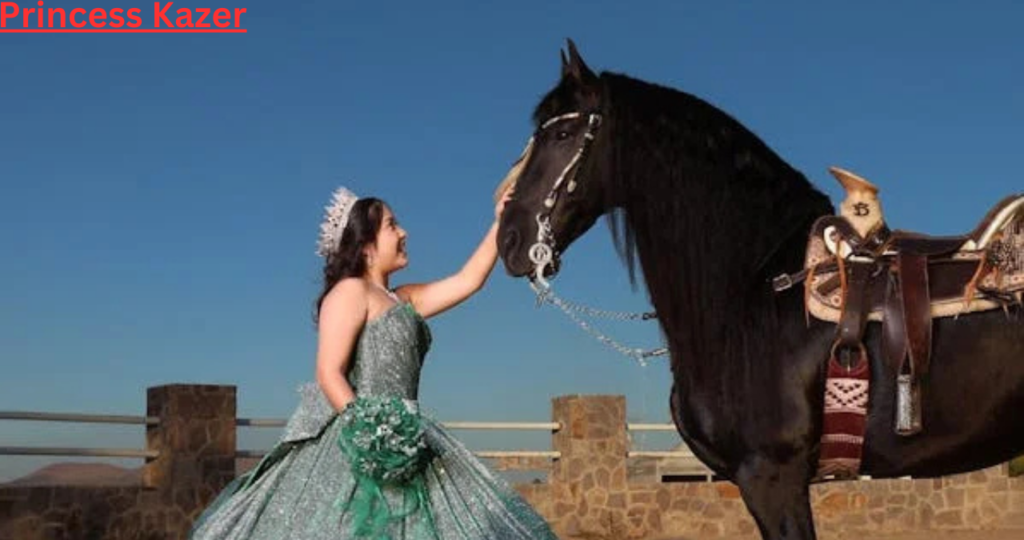The legend of Princess Kazer occupies a unique place in the tapestry of folklore, threading through the fabric of time to whisper tales of mystery, bravery, and intrigue. Far more than a mere mythical figure, Princess Kazer represents a blend of historical echoes and cultural heritage that continues to resonate with people across generations and geographies. This article seeks to uncover the layers of this enigmatic figure, exploring her origins, the tales that surround her, and the impact she continues to wield on contemporary culture and academia.
Historical Context of Princess Kazer

To truly appreciate the stories of Princess Kazer, one must first understand the era from which they sprang. Thought to have lived during a tumultuous period marked by the rise and fall of dynasties, Princess Kazer’s life story is often set against a backdrop of significant historical events and figures. The precise location of her tale varies, with some accounts placing her in the lush landscapes of Eastern Europe, while others situate her in the expansive realms of Central Asia, suggesting her story’s broad appeal and adaptability.
Historians and folklorists debate the accuracy of her existence, often citing the lack of concrete evidence such as contemporary writings or archaeological findings. Despite this, the allure of Princess Kazer endures, bolstered by oral traditions that paint her as a pivotal figure involved in the key political and social upheavals of her time. Whether as a peacemaker who bridged warring factions or a warrior princess defending her land, Kazer’s legend is imbued with themes of strength and resilience.
The Legend of Princess Kazer
The tales of Princess Kazer are as varied as they are vivid. In the most popular version, she is portrayed as a warrior of unmatched skill, a beacon of courage and wisdom. Her story often involves dramatic elements such as forbidden love, betrayal, and epic battles. Depending on the storyteller, Kazer can be a tragic heroine who sacrifices her happiness for the sake of her people or a cunning strategist who outwits her enemies and secures her realm’s prosperity.
These narratives are rich with symbolism, often reflecting the values and concerns of the societies that adopted her tale. For instance, in regions where female leadership was rare, Kazer’s story might highlight her exceptional ability to lead and command respect in a male-dominated society. Alternatively, in areas plagued by conflict, her tales could emphasize themes of reconciliation and unity.
The Impact of Princess Kazer on Modern Culture

Princess Kazer’s influence extends far beyond the ancient texts and oral histories where she first appeared. Modern adaptations of her story continue to appear in literature, film, and other forms of media, attesting to her lasting appeal. Each retelling adds layers to her character, making her relevant to new audiences and different cultural contexts.
In addition to entertainment, Kazer’s legend has a tangible impact on tourism and local economies, especially in regions that claim her as part of their heritage. Festivals, museums, and cultural events often celebrate her story, attracting visitors eager to experience the history and romance of Princess Kazer’s world. These activities not only bolster local pride but also contribute to the preservation of cultural identity.
Princess Kazer in Academia
Academic interest in Princess Kazer has surged in recent decades, with scholars eager to explore the origins of her legend and its sociocultural implications. Researchers delve into ancient manuscripts and folklore records to trace the evolution of her story, seeking insights into the historical conditions that might have inspired such tales. This scholarly work is crucial for understanding how myths and legends function within societies, serving as mirrors to the values, fears, and aspirations of the people who cherish them.
Debates among historians and folklorists often focus on distinguishing historical facts from literary embellishments. These discussions not only enrich our understanding of Princess Kazer but also highlight the broader methodological challenges in the study of folklore and myth. Through such academic exploration, Kazer’s story serves as a case study in the dynamic interplay between history and myth, revealing the complex ways in which collective memory is constructed and maintained.
Conclusion
Princess Kazer remains an enigmatic figure whose legend continues to captivate and inspire. Her story, woven through the ages, serves as a testament to the enduring power of folklore to shape, reflect, and challenge cultural identities. As we revisit and reinterpret her tales, we not only keep her legacy alive but also deepen our understanding of the past and its influence on our present.
FAQs
Who was Princess Kazer and why is she significant?
Princess Kazer is a legendary figure believed to have lived during a tumultuous historical period. Her significance lies in her representation of courage, leadership, and resilience, serving as a cultural icon and a source of inspiration across various societies.
What are the main elements of the Princess Kazer legend?
Key elements include themes of warfare, strategy, forbidden love, and sacrifice. Her stories are marked by dramatic conflicts and resolutions that emphasize her heroic qualities.
How do different cultures portray the Princess Kazer story?
Cultural portrayals vary, with some emphasizing her diplomatic skills and others highlighting her warrior prowess. The core of her story often adapts to reflect the values and issues of the adopting culture.
Has the legend of Princess Kazer been adapted into other media forms?
Yes, her story has been adapted into books, films, and even operas, each interpretation adding a contemporary twist to her age-old tales.
What can the story of Princess Kazer teach us today about our cultural history?
Her legend offers insights into the societal values and historical conditions of the times and places where her story was told, reflecting how cultures view leadership, gender roles, and conflict resolution.






